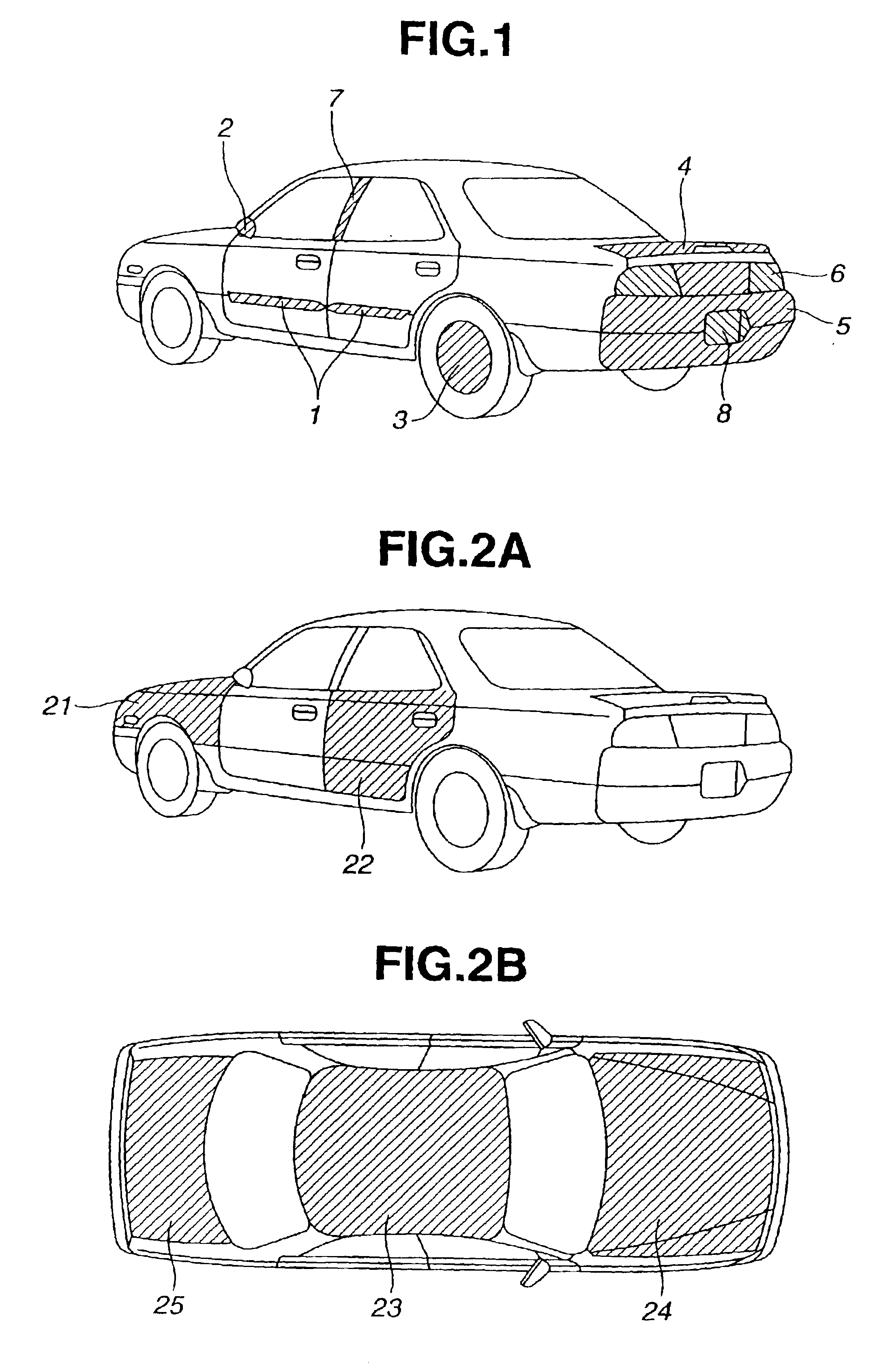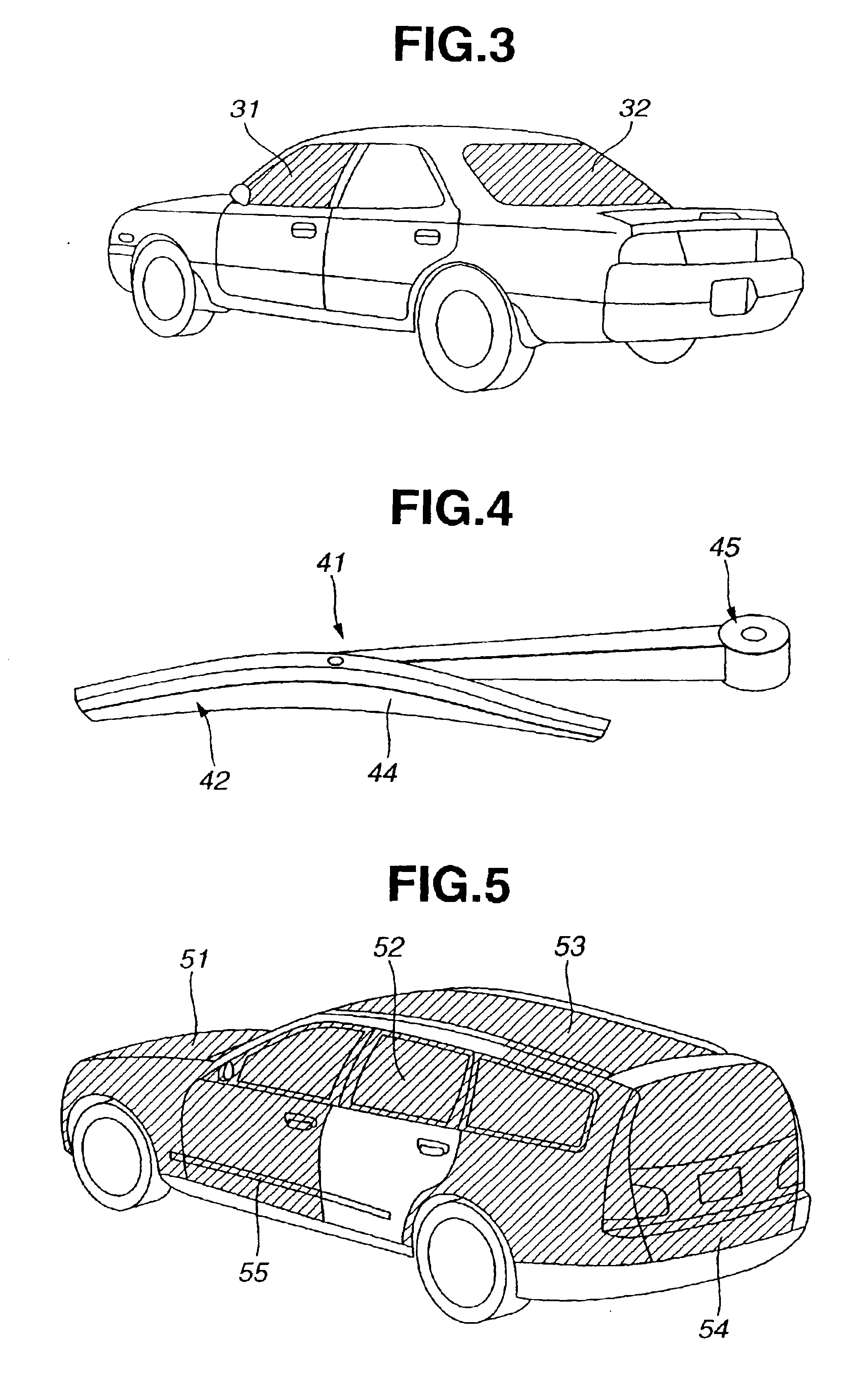Resin composition, thermoplastic resin laminate, and production methods thereof
a technology of thermoplastic resin and composition, applied in the direction of synthetic resin layered products, rigid containers, packaging, etc., can solve the problems of large thickness, large thickness, and low rigidity of glass and composite materials, and achieve the effect of improving impact resistance and rigidity, retaining transparency and impact strength, and large thickness
- Summary
- Abstract
- Description
- Claims
- Application Information
AI Technical Summary
Benefits of technology
Problems solved by technology
Method used
Image
Examples
examples
[0119]The resin composition (C) embodying this invention and the process for manufacturing it will now be described in detail by way of examples, though this invention is not limited thereto.
experiment 1
Example 1
[0120]A thorough mixture was made of 190 g of refined methyl methacrylate, 10 g of 2-hydroxyethyl methacrylate and 22 g of a powder of a silica compound having a surface subjected to a hydrophobicity-providing treatment (AEROSIL R974 of Nippon Aerosil Co., Ltd. having an average primary particle diameter of 12 nm and treated with dimethyldichlorosilane), and was put in a three-necked flask with 1.5 g of AIBN (azobisisobutyronitrile), 1.5 g of dodecyl sodium sulfate, 20 g of sodium hydrogen phosphate and 800 g of water, and they were allowed to react for about six hours at a liquid temperature of 80 deg. C. (° C.) under vigorous stirring, carrying out gas purging with nitrogen. After completion of the reaction, the reaction product was collected by filtration, washed in water thoroughly, and dried under a reduced pressure to yield a particle resin composition as intended. A test specimen was prepared from it by hot press forming. This is Example 1.
example 2
[0121]A thorough mixture was made of 190 g of refined methyl methacrylate, 10 g of methacrylamide and 22 g of a powder of a silica compound having a surface subjected to a hydrophobicity-providing treatment (AEROSIL R974 of Nippon Aerosil Co., Ltd. having an average primary particle diameter of 12 nm and treated with dimethyldichlorosilane), and was put in a three-necked flask with 1.5 g of AIBN (azobisisobutyronitrile), 1.5 g of dodecyl sodium sulfate, 20 g of sodium hydrogen phosphate and 800 g of water, and they were allowed to react for about six hours at a liquid temperature of 80 deg. C. under vigorous stirring, carrying out gas purging with nitrogen. After completion of the reaction, the reaction product was collected by filtration, washed in water thoroughly, and dried under a reduced pressure to yield a particle resin composition as intended. A test specimen was prepared from it by hot press forming. This is Example 2.
PUM
| Property | Measurement | Unit |
|---|---|---|
| Fraction | aaaaa | aaaaa |
| Percent by mass | aaaaa | aaaaa |
| Percent by mass | aaaaa | aaaaa |
Abstract
Description
Claims
Application Information
 Login to View More
Login to View More - R&D
- Intellectual Property
- Life Sciences
- Materials
- Tech Scout
- Unparalleled Data Quality
- Higher Quality Content
- 60% Fewer Hallucinations
Browse by: Latest US Patents, China's latest patents, Technical Efficacy Thesaurus, Application Domain, Technology Topic, Popular Technical Reports.
© 2025 PatSnap. All rights reserved.Legal|Privacy policy|Modern Slavery Act Transparency Statement|Sitemap|About US| Contact US: help@patsnap.com



